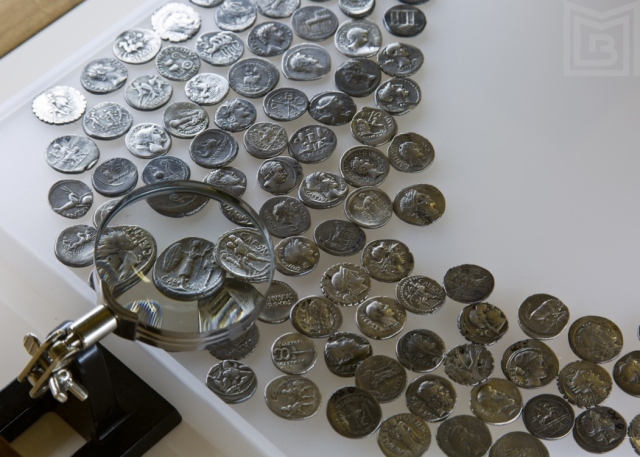The George Severeanu Museum and Collection
The house of MD George Severeanu has been transformed into a museum, being one of the branches of the Bucharest Municipality Museum.

Christine Leșcu, 04.06.2023, 14:00
In one of the old, central and chic neighborhoods of Bucharest, near the main boulevard Calea Victoriei — Victory Road, there is the house of the medical doctor George Severeanu, a house that has been transformed into a museum, being one of the branches of the Bucharest Municipality Museum. It is not surprising at all, as the radiologist Severeanu was, actually, the first director of the Bucharest’s Museum and one of the most important collectors of historical artifacts of the epoch. Coming from a family of medical doctors, George Severeanu was born in 1879 and many of his passions — including medicine and travel — were inspired by his father, another famous doctor, the surgeon Constantin Dimitrescu Severeanu, as Dan Pârvulescu, a museographer at the George Severeanu Memorial House told us.
Dan Pârvulescu: “He managed to travel abroad quite a lot, thus being an inspiration for his child, the future doctor George Severeanu, to travel abroad, to visit museums. It was a fashionable thing at the time. In time, he completed his studies in Berlin and Vienna. He met a lot of people who were passionate about collecting. At that time, collecting was a fashion in Europe and here, in the Romanian space, and, in this way, he began to slowly collect different objects, in parallel with his medical career, which was an exceptional one. He taught at the Faculty of Medicine and was a doctor at Brâncovenesc Hospital. At that time, he published many specialized articles, books, and in parallel, he was passionate about collecting historical artifacts.”
Many of these artifacts come from the Romanian space, from Dobrogea, and from the Mediterranean basin, being mainly of Greco-Roman origin. Dr. Severeanus collection also includes surprising things for archaeologists, prehistoric objects from the Bucharest area thanks to which the history of the capital could be completed. However, the main passion of radiologist George Severeanu was numismatics.
Dan Pârvulescu is back at the microphone with more: “George Severeanu’s greatest passion was numismatics and he collected almost 9,000 coins, which he donated to the museum. His entire collection is donated in several stages to the Bucharest Municipality Museum. They are Greek, Roman and medieval coins. Many of them were quite surprising, for instance those from the medieval period. Part of the collection consists of coins from the time of ruler Radu I, a historical figure not very well known in historiography. There are not many things left from his reign, but through the important collection of coins from his period, it was possible to better document some things related to the economy, money circulation and trade in that period.”
Given the importance of Dr. Severeanu’s collection, it is no wonder that he was appointed to head the History Museum of the Romanian capital city, when it was established in the inter-war period. Dan Pârvulescu explains: “It was the municipality’s idea to set up this museum, but it took more than a decade for the project to be implemented. The decision was made in 1921, but it was only ten years later that works were actually initiated, and the museum collection was built around this core, dr. Severeanu’s collection. On the other hand, archaeological research was being conducted in the Bucharest area, so another important part of the collection came from this archaeological research. Obviously, donations from the population were also important, because when the decision was made to set up a museum of the city of Bucharest, people contributed lots of things.”
Unfortunately, the physician’s house, which was an item of architectural heritage in itself, had an unfortunate destiny, especially at the beginning of the communist era, when it was nationalised and seized by the members of the communist nomenklatura, as Dan Pârvulescu told us.
Dan Pârvulescu: “For a while, various people lived there. Dr. George Severeanu died in 1939 and his wife continued to live in the house for another 18 years. But the building was nationalised and the party brought various officials to live there. Meanwhile, the collection was taken abroad. Most of it ended up in Paris, part of it was in Belgium. Documents are still missing, and the house archive or the National Archive have little information about it. We are working on a monograph of this family, because it is well worth it. There’s a blank period, about which we don’t know much. What we do know is that in 1956 the museum was opened in the house, with exhibits mainly consisting of coins from various periods, but in the early 1990s the house was in such a state of disrepair that the authorities were forced to close it.”
Fortunately, in 2017, after extensive restoration and upgrade works, the George Severeanu Museum was opened in the physician’s home, where his collection is on display in a modern, interactive manner. (LS, AMP)





























